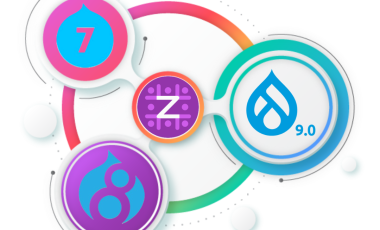Enhancing Content Accessibility for 3ie Evidence Gap Maps
Introduction
Founded in 2008, the International Initiative for Impact Evaluation (3ie) is at the forefront of transforming lives in low- and middle-income countries. 3ie collaborates with governments, foundations, NGOs, and research institutions to provide evidence-based solutions for effective decision-making in developmental projects.
One of their groundbreaking tools is the Evidence Gap Maps (EGMs)—interactive, thematic collections that present visual overviews of existing and ongoing studies in the international development sector. Designed to highlight gaps and concentrations in research, EGMs offer user-friendly summaries and full-text articles.
However, ensuring that this rich, interactive online platform is accessible to all users, including the differently-abled, presented a unique challenge. Our project aimed to assess and improve the accessibility of the EGM platform, aligning it with WCAG 2.1 standards.
Challenges
While EGMs provide a valuable resource, their complex user interface—with filters, filter-embedded pop-ups, and radio buttons—was not fully accessible to differently-abled users. The challenge was to make this feature-rich platform comply with WCAG 2.1 AA accessibility guidelines without compromising its functionality. We had to combine multiple accessibility checking tools and manual checks to do the initial audit. Once the engineering team fixed the issues, another round of audits was performed to ensure compliance with the WCAG 2.1 AA standards.
Our Approach
Audit Preparation
We formulated a thorough audit checklist founded on WCAG 2.1 AA guidelines.

Segregation of Criteria
The checklist clearly separated criteria suitable for automated checks from those that required manual scrutiny.
Initial Assessment
An initial assessment was conducted using the Lighthouse Tool to gauge the platform’s starting compliance status.
Audit Execution and Remediation
Automated checks utilized various open-source tools like WAVE, AXE, Bookmarklets, NVDA Screenreader, and Nu HTML Checker. Manual checks focused on the criteria not covered by these tools, addressing the shortcomings effectively.
Reaudit for Impact Assessment
A reaudit was conducted post-remediation to assess the impact of changes made.
Manual Assessment Areas
- Keyboard Navigation, Keyboard Trap and Focus Indication
- Non-text Content Evaluation
- Consistent Navigation
- Input Assistance
- Input Modalities
- Error Suggestion
Result
Initial Score
The initial score revealed a moderate level of compliance but highlighted significant areas for improvement.
Final Score
Post-remediation, the final score showcased a considerable enhancement in the accessibility levels, making it nearly fully compliant with WCAG 2.1 AA guidelines.
Final Audit Outcome
The EGM platform became substantially more accessible, meeting the varied needs of its global user base.
The project demonstrated the efficacy of combining automated tools with manual assessments to achieve a robust and inclusive digital environment. By successfully aligning the EGM platform with WCAG 2.1 standards, we've made an essential tool in the field of international development more accessible to everyone. Given the evolving nature of digital platforms, regular audits for accessibility compliance remain critical for ensuring ongoing inclusivity.



